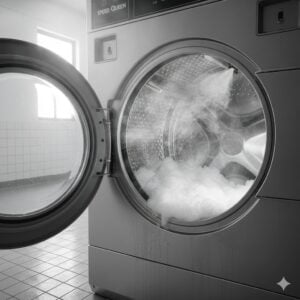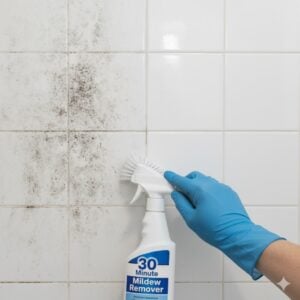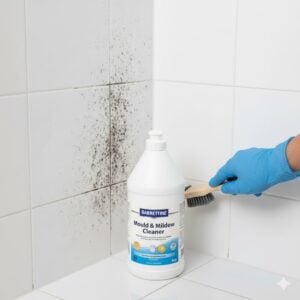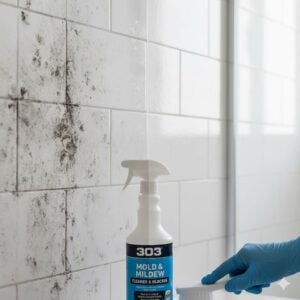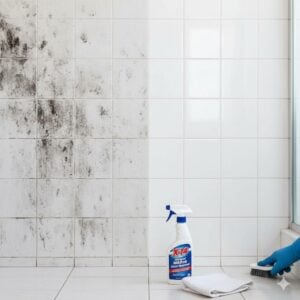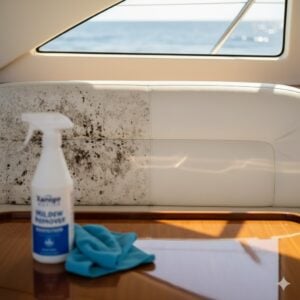Hidden mold is a big reason why homes and offices in Dubai can feel “off”—musty smells, irritated sinuses, headaches, or stains that keep coming back. The tricky part is that not all mold is visible. Because most buildings here are tightly sealed and cooled by AC, spores can spread through ducts or sit behind walls long before you see them. That’s where professional mold testing in Dubai matters. Testing tells you if mold is present, what type it is, how serious it is, and exactly where to focus remediation so you solve the real problem—not just wipe the surface.
Table of Contents
Toggle1) When should you test for mold in Dubai?
If you’re wondering, “Do I actually need testing, or should I just clean and repaint?”, use these Dubai-specific signals as your guide:
Persistent musty odor with no visible spots. Smells travel faster than stains. If a room smells damp after you’ve cleaned, spores may be inside AC returns, wardrobes, or behind gypsum board.
Water incidents, even small ones. Leaks from split units, pinhole plumbing leaks, balcony ingress during rain, or a recent move-in after the unit sat closed for months—all are common local triggers.
Recurring patches or sudden spread. Reappearing dots on ceilings near vents, bathroom corners that “return” a week after scrubbing, or wardrobe mold on bags/shoes signal an ongoing source.
Health clues. If someone feels better when away from home or the office—fewer sneezes, less coughing, fewer headaches—testing helps confirm an indoor air quality (IAQ) issue.
Due diligence. Before renting, buying, or handing over a unit, testing provides documentation and prevents disputes over “pre-existing” conditions.
2) What types of mold tests do we use—and why?

Different questions call for different tests. We combine methods so results are clear and actionable for you (and for building management if needed):
- Air Quality Testing (spore trap sampling) — Captures spores floating in your indoor air to reveal hidden growth or HVAC spread. Ideal when you can smell an issue but can’t find it. Also helpful for “before/after” clearance.
- Surface Sampling (swab or tape lift) — Targets suspicious spots on paint, grout, wood, or inside AC plenums. Confirms if visible discoloration is fungal and identifies the genus/species.
- Humidity, Moisture & pH Measurements — Maps damp walls, checks condensation risk around vents, and diagnoses whether materials are staying in the “wet zone” that feeds mold.
- PCR Analysis (DNA-based ID) — Pinpoints species with high confidence. Useful for stubborn cases, medical sensitivities, or legal documentation.
- Mycotoxin Analysis — Determines whether toxin-producing molds are present. We use this for complex or long-running exposures where health practitioners request more detail.
Alongside sampling, we use moisture meters and thermal imaging to “see” dampness behind paint or tiles. The goal isn’t just to detect mold; it’s to find what’s feeding it so you can stop it for good.
3) How professional mold testing works (step-by-step)
Step 1 – Intake & priorities. We listen. Where do you notice smells? Which rooms feel humid? Any leaks, recent renovations, or AC maintenance? Your clues guide our sampling plan so we don’t waste time or your budget.
Step 2 – Walkthrough & moisture mapping. We check bathrooms, kitchens, AC returns/supply grills, wardrobes, window reveals, and exterior-adjacent walls. Moisture meters and IR scans help us spot hidden damp spots even if the paint looks fine.
Step 3 – Targeted sampling. Depending on findings, we collect air samples (typically indoors plus an outdoor reference), swabs or tape lifts from suspect surfaces, and—if warranted—PCR or mycotoxin samples. Chain-of-custody is maintained for credible lab results.
Step 4 – Lab analysis & interpretation. Results without context can be confusing. We translate lab data into plain English: species found, likely source, health relevance, and what it means for your home or office.
Step 5 – Action plan & prevention. You’ll get a clear, prioritized plan: address moisture sources, specify which areas need remediation (and which don’t), outline cleaning/containment methods, and set realistic timelines. If remediation is needed, we can perform it and then re-test for clearance so you know the space is safe.
4) Mold testing cost in Dubai (and how to budget smartly)
We keep pricing simple, transparent, and modular so you only pay for what you need. Advanced identification tests are AED 1,000 each—book only the ones that add value for your case.
| Test / Service | Typical Use | Price (AED) |
|---|---|---|
| Air Quality Testing | Hidden mold, HVAC spread, baseline & clearance | 1,000 |
| Surface Scraping / Microscopic Analysis | Confirm if a stain is mold; basic ID | 1,000 |
| PCR Analysis | Precise species identification | 1,000 |
| Mycotoxin Analysis | Assess toxin-producing molds | 1,000 |
| Humidity & pH Level Measurement | Material risk profile; prevention planning | 1,000 |
| Sample Analysis (lab) | Additional samples beyond base set | 1,000 |
Smart budgeting tip: Start with air + one targeted surface sample where the problem seems worst. Add PCR or mycotoxin only if results or symptoms point that way. You get clarity fast without over-testing.
If testing shows you do need cleanup, our removal pricing is volume-based and designed to be fair:
| Affected Area | Rate | Notes |
|---|---|---|
| Up to 1 sq.m. | AED 35 per sq.m. | Small spot treatments |
| 1–3 sq.m. | AED 30 per sq.m. | Localized wall/ceiling areas |
| 3–7 sq.m. | AED 25 per sq.m. | Multiple rooms or corners |
| 7–10 sq.m. | AED 20 per sq.m. | Broader coverage |
| More than 10 sq.m. | Free inspection | We assess & quote on site |
Every property is unique, but testing early usually means simpler (and cheaper) remediation. If you’d like a quick estimate for your case, just click the contact button on the right-middle of this post and we’ll help right away.
5) Interpreting results: what “good” and “bad” look like
Air samples. We compare indoor counts with an outdoor/control reference and look at the types present. If indoor levels are significantly higher—or if certain water-loving species appear inside more than outside—that points to an indoor source. After remediation, indoor counts should drop and the species profile should normalize.
Surface samples. Positive identification confirms that a stain is fungal (vs. dust or soot) and tells us whether the growth is active. On painted gypsum, active growth suggests ongoing moisture—often condensation around vents or a slow leak behind tiles.
Moisture readings. Materials above safe moisture thresholds won’t stay clean for long. If a wall is “wet” by meter/IR, we’ll trace the cause (AC condensation, plumbing, facade ingress) and fix it as part of the plan.
PCR & mycotoxins. A precise species ID or toxin finding doesn’t automatically mean “panic”—it means “be precise.” We’ll match the data to your symptoms, building history, and moisture map so the remedy is proportionate and effective.
6) DIY test kits vs professional testing
DIY kits can be tempting, but Dubai’s building styles and AC systems complicate interpretation. A single plate left on a countertop won’t tell where the problem originates (duct? wall cavity? wardrobe?) or how to fix it. Professional testing uses multiple lines of evidence—air, surface, and moisture mapping—so your money goes into solving the cause, not just confirming what your nose already suspects.
Conclusion: test smart, solve once
Mold testing in Dubai isn’t about scaring you—it’s about clarity. With the right samples and a focused plan, we can show you what’s happening, stop the moisture that’s feeding it, and verify the fix with post-remediation testing. That means cleaner air, fewer symptoms, and walls that stay clean after you repaint.
Ready for straight answers and a clear plan? Click the contact button on the right-middle of this post. We’ll listen first, test only what’s needed, and guide you from “something smells wrong” to “home feels fresh” as quickly—and affordably—as possible.








